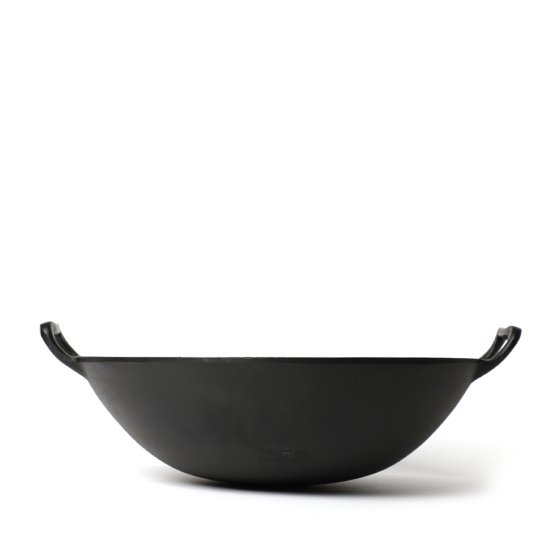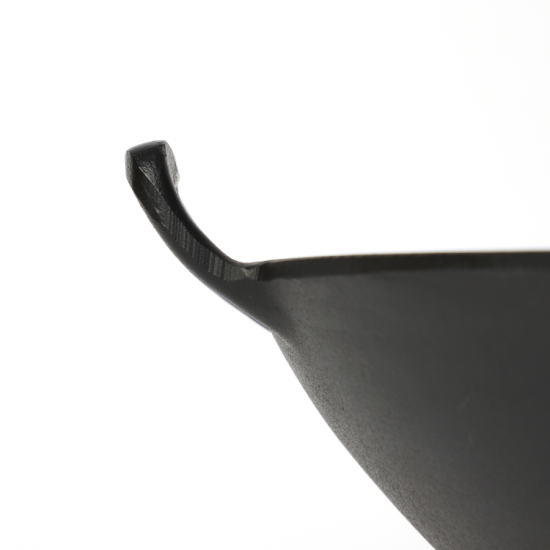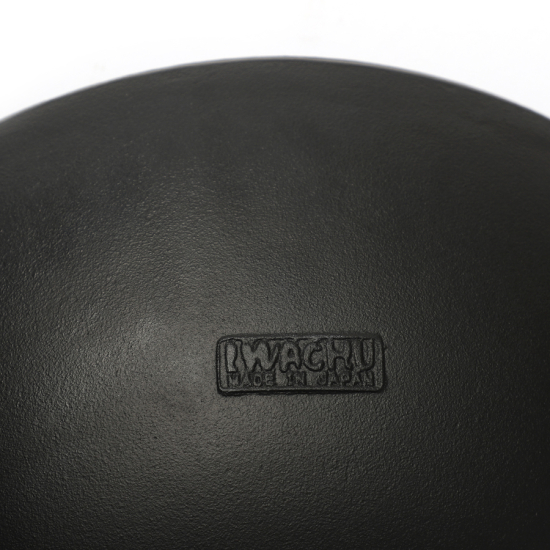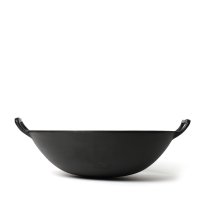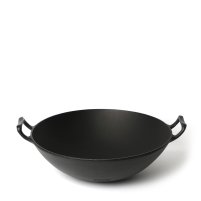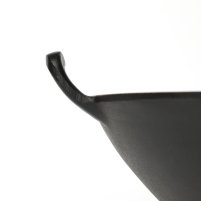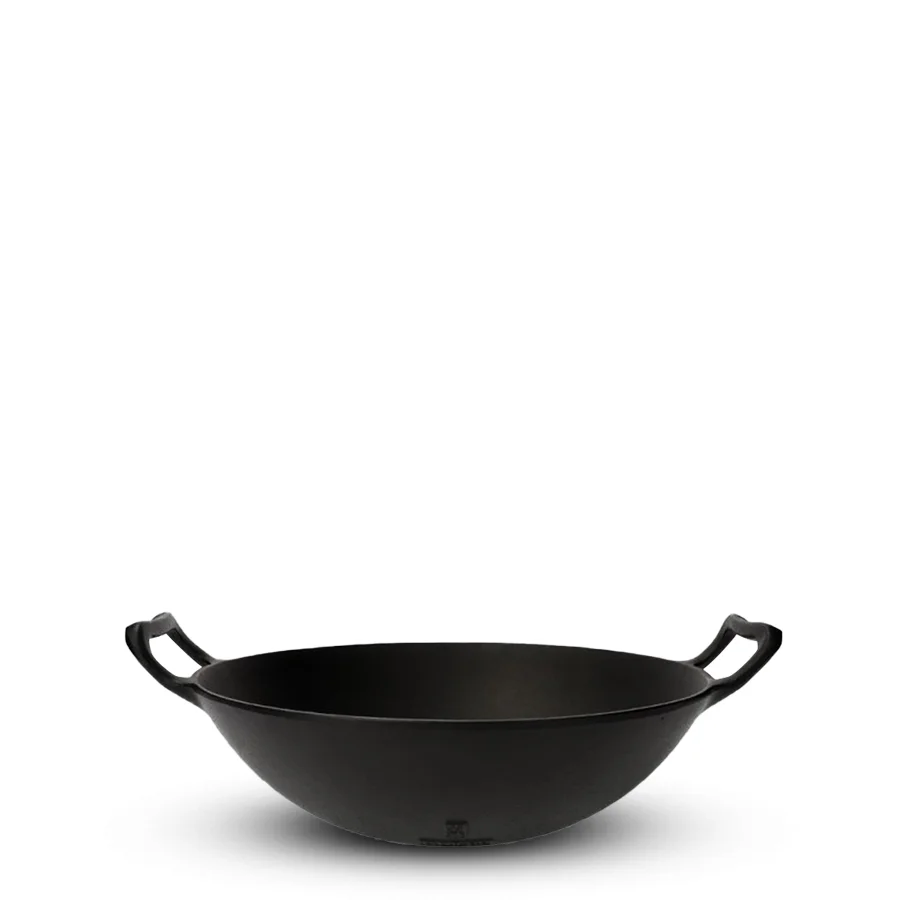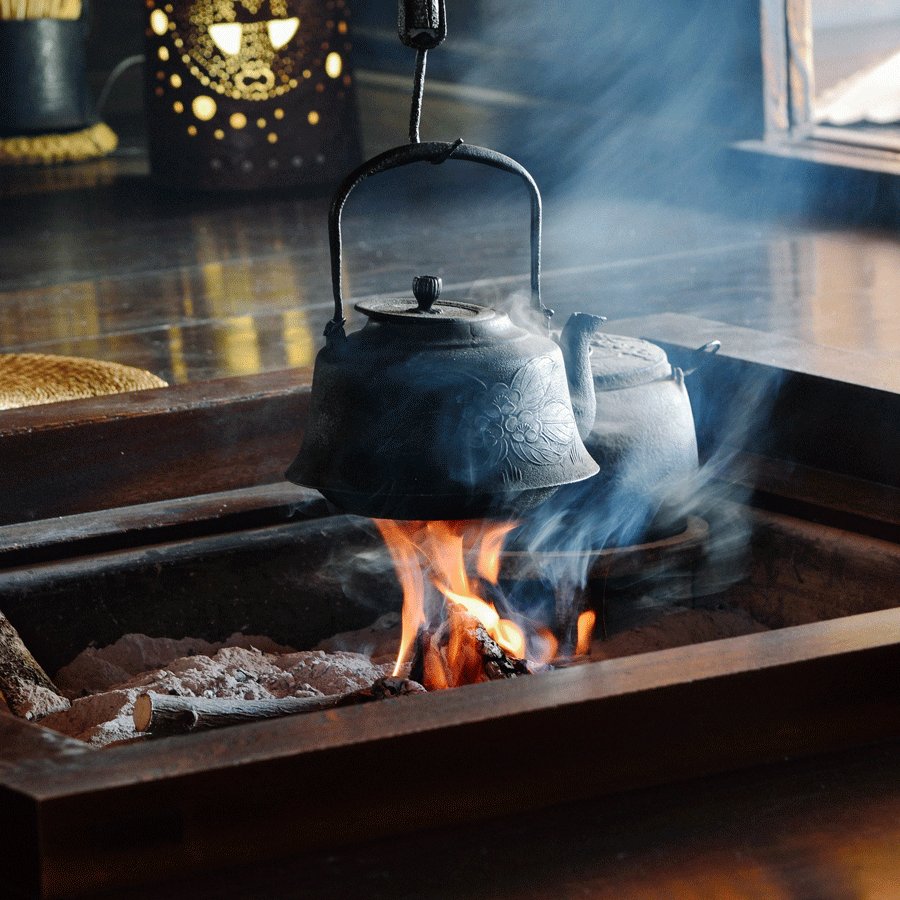Highly complex manual production. For the mould, an exact pattern of the end product is created, around which a layer of sand is pressed, which then takes on the desired shape for the wok. Iron is then poured into the mould at a temperature of up to 1500°C - a process that requires the utmost concentration and a great deal of experience, because it is essential to avoid air bubbles entering the cast iron. Once the iron has cooled and dried, the mould is removed. Any residual sand must then be carefully cleared away and the final product is thoroughly buffed to eliminate any metal splinters on the surface. This leaves a slightly rough surface, which allows oil to penetrate the surface structure during the cooking process, creating a lipid protective membrane that protects the wok from burning.
Cast Iron Japanese Wok Iwachu M
Iwachu
SKU
2989
Yoshi En has recently grown out of Sunday Natural to become an independent premium tea store. As part of this transition, some products may still be shipped in Sunday Natural packaging.
Cast iron wok by traditional manufacturer, Iwachu of Iwate, Japan. Iron-permeable surface to enrich food with iron during preparation. 32cm diameter.
Note
This wok is only suitable for use with a gas cooker or open fire due to the rounded bottom.
| Type | Nanbu Tekki Cast Iron Wok |
| Origin | Morioka, Iwate Prefecture, Japan |
| Studio/Artist | Iwachu |
| Dimensions in cm | Ø32cm x 9.5cm |
| Weight | 3.3kg |
| Material | Cast iron |
| Coating | Iron-permeable silicone coating for rust protection (Kuro-yakitsuke technique 黒焼付仕上げ) |
| Stove compatibility | Suitable for gas cooker and open flame |
| Stamp | Iwachu stamp |
In stock



